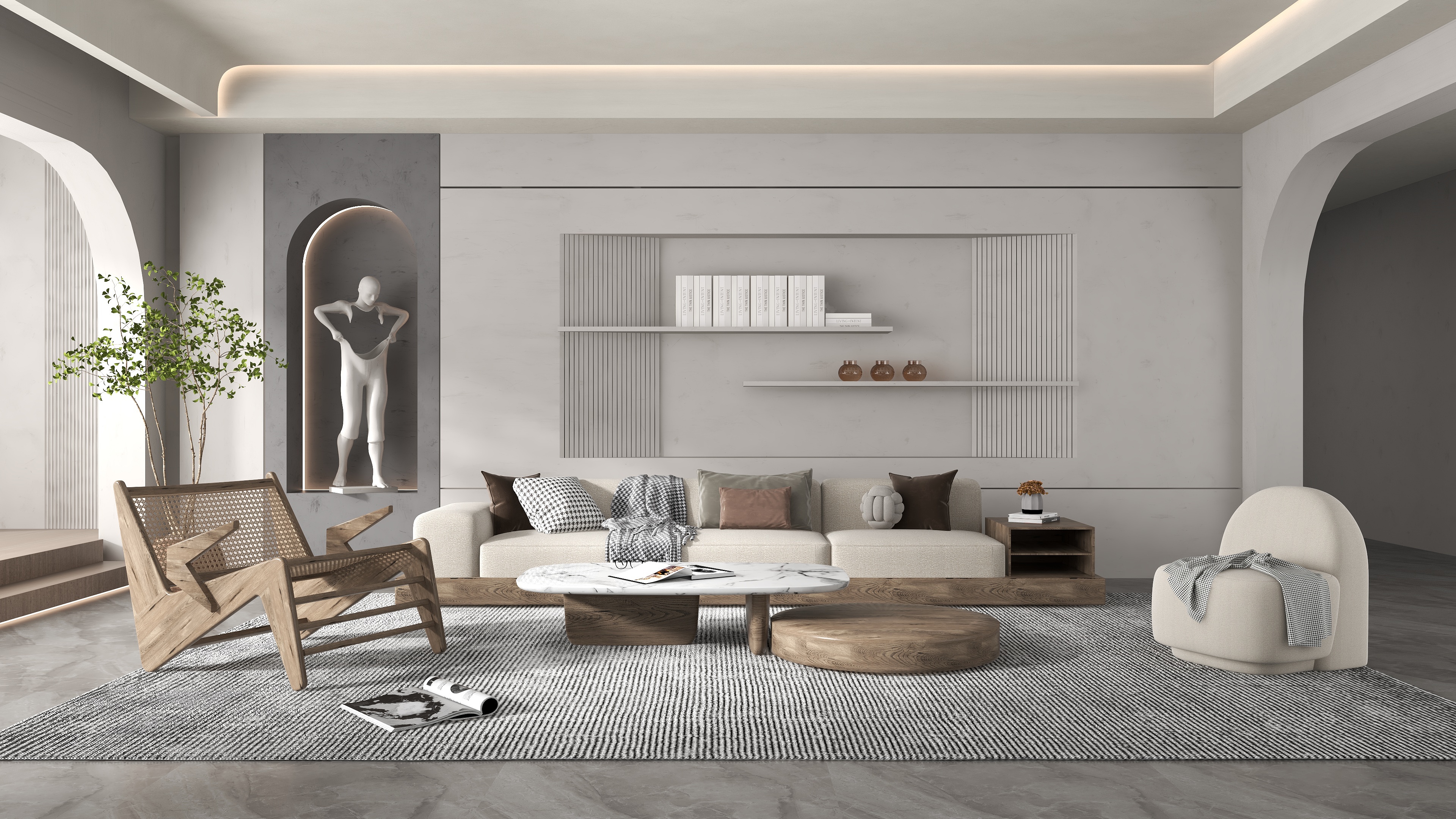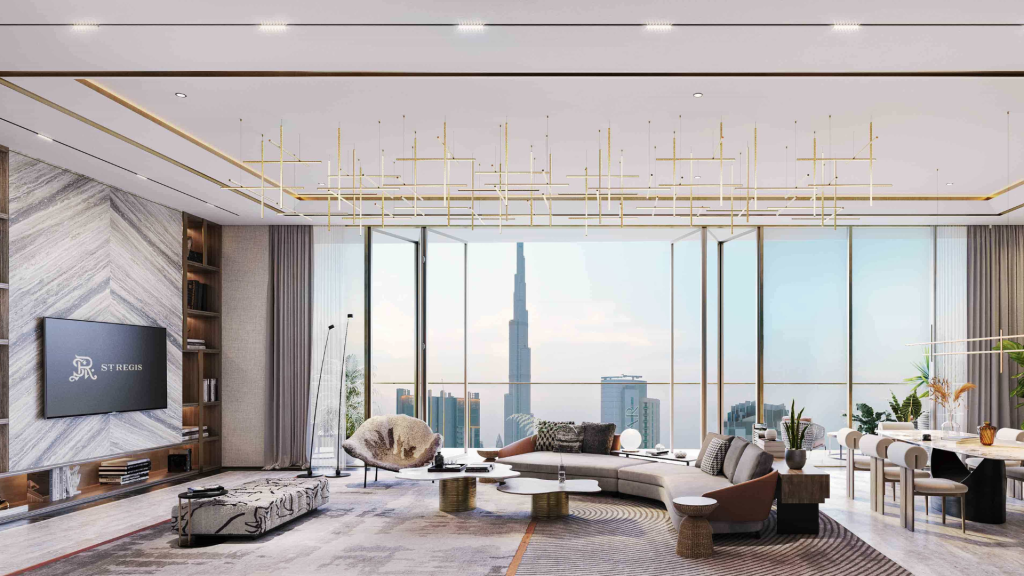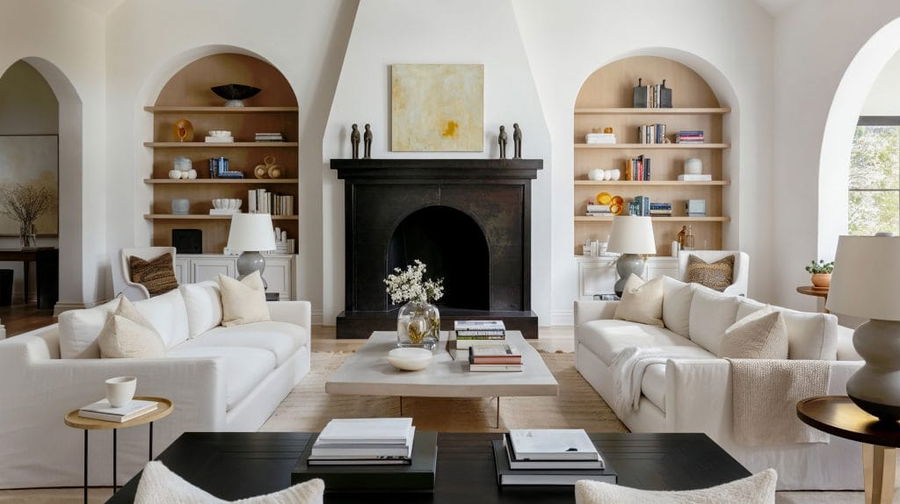Transform Your Living Room with These Minimalist Ideas in the ever-evolving world of interior design, minimalism remains a steadfast trend, capturing hearts with its simplicity and elegance. A minimalist living room is a serene haven that promotes relaxation, balance, and order. In 2025, the minimalist style continues to flourish, blending modern aesthetics with functional design to create inviting spaces that cater to both style and comfort. If you’re looking to revamp your living room, minimalist living room ideas will help you achieve the perfect balance between beauty and practicality.
Minimalism isn’t just about removing excess; it’s about enhancing the overall feel of a space by focusing on what truly matters. By emphasizing clean lines, neutral color palettes, and a clutter-free environment, minimalist design transforms your living room into a tranquil escape. Whether you’re in a small apartment or a spacious home, these minimalist living room ideas will guide you to create a space that feels open, functional, and stylish.

1. Opt for a Neutral Color Palette
When it comes to minimalist design, color is everything. Neutral tones—such as whites, grays, beiges, and soft pastels—are the foundation of many minimalist living room ideas. These hues create a soothing atmosphere and provide the perfect backdrop for furniture and decor pieces that are both stylish and understated.
A neutral palette allows for flexibility in design, letting you play with textures and materials without overwhelming the space. To avoid a sterile or dull look, incorporate varying shades of neutrals, like a soft ivory paired with warm taupes or grays. This layering of tones creates visual interest while maintaining a serene and calm ambiance.
You can also introduce pops of color through accessories like pillows, throws, or artwork. However, it’s essential to keep the color palette subtle to stay true to the minimalist ethos. The goal is to maintain a sophisticated, cohesive look that feels expansive and uncluttered.
2. Embrace Open Floor Plans
An open floor plan is one of the most iconic features of minimalist interior design, especially in the living room. By removing unnecessary walls or partitions, the space feels larger and more inviting. Open layouts also encourage flow and connection, making the space feel more expansive, regardless of its actual size.
In 2025, an open floor plan is an even more essential part of minimalist living room ideas, as it reflects the growing trend toward creating multi-functional spaces that adapt to various needs. An open layout gives you the freedom to design a living room that flows seamlessly into the dining or kitchen area, making the entire space feel cohesive.
To achieve a balanced open floor plan, choose minimal furniture that doesn’t overpower the space. Avoid heavy, bulky pieces that disrupt the flow. Instead, opt for sleek, low-profile furniture that maintains a clean and modern aesthetic while being practical.
3. Prioritize Functional, Multifunctional Furniture
A hallmark of minimalist living is the idea of versatility. Furniture in a minimalist living room should not only be aesthetically pleasing but also highly functional. Minimalist living room ideas in 2025 emphasize multifunctional furniture that maximizes space while offering practical solutions.
Think about investing in a sofa that doubles as a bed for overnight guests or a coffee table that doubles as storage. Bookshelves that double as room dividers or ottomans with hidden compartments for blankets and pillows are also excellent options. The goal is to minimize clutter while making sure each piece of furniture has a purpose beyond just looking good.
By carefully selecting furniture that serves multiple purposes, you ensure that your living room remains open and uncluttered, giving it that signature minimalist charm.
4. Incorporate Natural Materials
Minimalism and sustainability often go hand-in-hand. Natural materials such as wood, stone, and metal are staples in minimalist living room ideas because they add warmth and texture without overwhelming the senses. These materials are timeless, durable, and contribute to a more eco-friendly living space.
Incorporate wood furniture with clean lines and simple shapes, whether it’s a wooden coffee table, shelving units, or a TV stand. For a more rustic touch, consider adding stone accents through coffee tables or fireplace surrounds. Metal elements, such as metal-framed chairs or minimalist light fixtures, add a contemporary feel while keeping the space grounded.
The key to success in incorporating natural materials is balance. Don’t overdo it; keep the materials subtle to preserve the minimalist vibe. The right combination of wood, stone, and metal will give your living room an earthy, natural elegance.
5. Make Smart Use of Lighting
Lighting plays a crucial role in minimalist interior design. A well-lit room can make all the difference between a cramped, dreary space and an airy, inviting living room. In 2025, the focus is on natural light, combined with sleek, modern lighting fixtures that emphasize function and style.
Maximize natural light by choosing large windows or sliding glass doors that allow sunlight to flood the room. Sheer curtains are ideal because they soften the light while maintaining privacy. To complement natural lighting, add minimalist light fixtures that offer ample illumination without being intrusive.
Opt for recessed lighting, pendant lights, or LED floor lamps that blend seamlessly with the design. These fixtures provide light without overpowering the space. For a soft, ambient glow, use warm white bulbs to create a cozy, welcoming atmosphere.
6. Keep Décor Simple Yet Impactful
In minimalist design, less is more—especially when it comes to décor. The key is to select pieces that have a significant impact without overwhelming the room. Rather than filling the space with clutter or unnecessary items, focus on statement pieces that add character and personality.
Artwork in minimalist spaces should be simple yet striking. Large, abstract paintings or monochrome prints work well to add a pop of color or intrigue to an otherwise neutral room. Sculptural objects, such as ceramic vases or minimalist sculptures, can serve as focal points that draw the eye without creating chaos.
When choosing décor, opt for quality over quantity. A single, well-chosen item can elevate the entire space, creating a refined, curated look that reflects your personality and enhances the minimalist design.
7. Invest in a Statement Sofa
The sofa is often the centerpiece of the living room, and in minimalist design, it plays a pivotal role in setting the tone for the entire space. Opt for a sofa that embodies simplicity and comfort without excess. Look for clean lines, neutral colors, and sleek materials like leather or fabric that align with your minimalist vision.
Avoid ornate, overstuffed sofas that add visual clutter to the room. Instead, go for streamlined pieces that have a modern, sophisticated aesthetic. You can introduce a touch of luxury with high-quality materials like velvet or fine linen, ensuring that the sofa remains both functional and stylish.
A minimalist sofa should be low-profile and unpretentious, providing a comfortable seating area without dominating the room. By choosing the right sofa, you can create a calm, welcoming atmosphere while staying true to minimalist principles.
8. Focus on Negative Space
One of the defining features of minimalist living room ideas is the emphasis on negative space—the areas between furniture and décor that help the room breathe. A well-designed minimalist room doesn’t feel crowded or congested. Instead, it feels open and free, with ample room for movement and relaxation.
Incorporating negative space requires thoughtful planning. Keep the layout open and airy by spacing furniture evenly and avoiding overcrowding. For example, don’t push all the furniture against the walls. Instead, create a balance between the furniture and the open areas, giving the room a sense of tranquility and balance.
The goal is to leave space for the eye to rest, ensuring that the room feels uncluttered and peaceful. Negative space is a key element in minimalist design, allowing the individual pieces in the room to stand out and shine.
9. Declutter Regularly
The foundation of any minimalist living room is organization and order. One of the most important aspects of minimalist living room ideas is maintaining a clutter-free environment. In 2025, the minimalist mindset encourages regular decluttering to keep your living room neat and serene.
Start by evaluating your belongings. Remove items that no longer serve a purpose or contribute to the overall aesthetic of the space. Invest in clever storage solutions, such as hidden cabinets or multi-purpose furniture, to keep essential items neatly tucked away. Keep the room’s surface areas clear of unnecessary objects to maintain an open, inviting feel.
A clutter-free living room is not only visually appealing but also contributes to a sense of calm and well-being. The less clutter, the more peaceful the environment, allowing you to truly enjoy the minimalist space you’ve created.
10. Incorporate Greenery for a Touch of Life
While minimalist design often focuses on neutral tones and simple shapes, incorporating greenery into the living room brings a refreshing contrast that adds life to the space. Plants are a perfect complement to the minimalist aesthetic because they are natural, functional, and visually interesting.
Choose plants with simple, elegant shapes that complement the room’s clean lines. Large potted plants, like fiddle leaf figs or snake plants, make a bold statement without overwhelming the space. Smaller plants, such as succulents or cacti, can be placed on side tables or shelves for a more subtle touch.
Not only do plants add a pop of color, but they also purify the air and enhance the overall ambiance of the room. When carefully selected and placed, greenery can elevate your minimalist living room while contributing to a healthier, more vibrant atmosphere.
Creating a minimalist living room in 2025 is about striking the perfect balance between style, comfort, and functionality. By incorporating minimalist living room ideas, you can transform your space into a serene retreat that is both beautiful and practical. From embracing neutral color palettes to choosing multifunctional furniture and maximizing natural light, every element of minimalist design contributes to a cohesive and calming environment.
Minimalism is not about emptying your space; it’s about making intentional choices that highlight the beauty of simplicity. With the right furniture, décor, and layout, your living room can become a sanctuary where you can unwind and relax in peace. So, embrace the minimalist lifestyle, and let your living room reflect the perfect balance between form and function.




